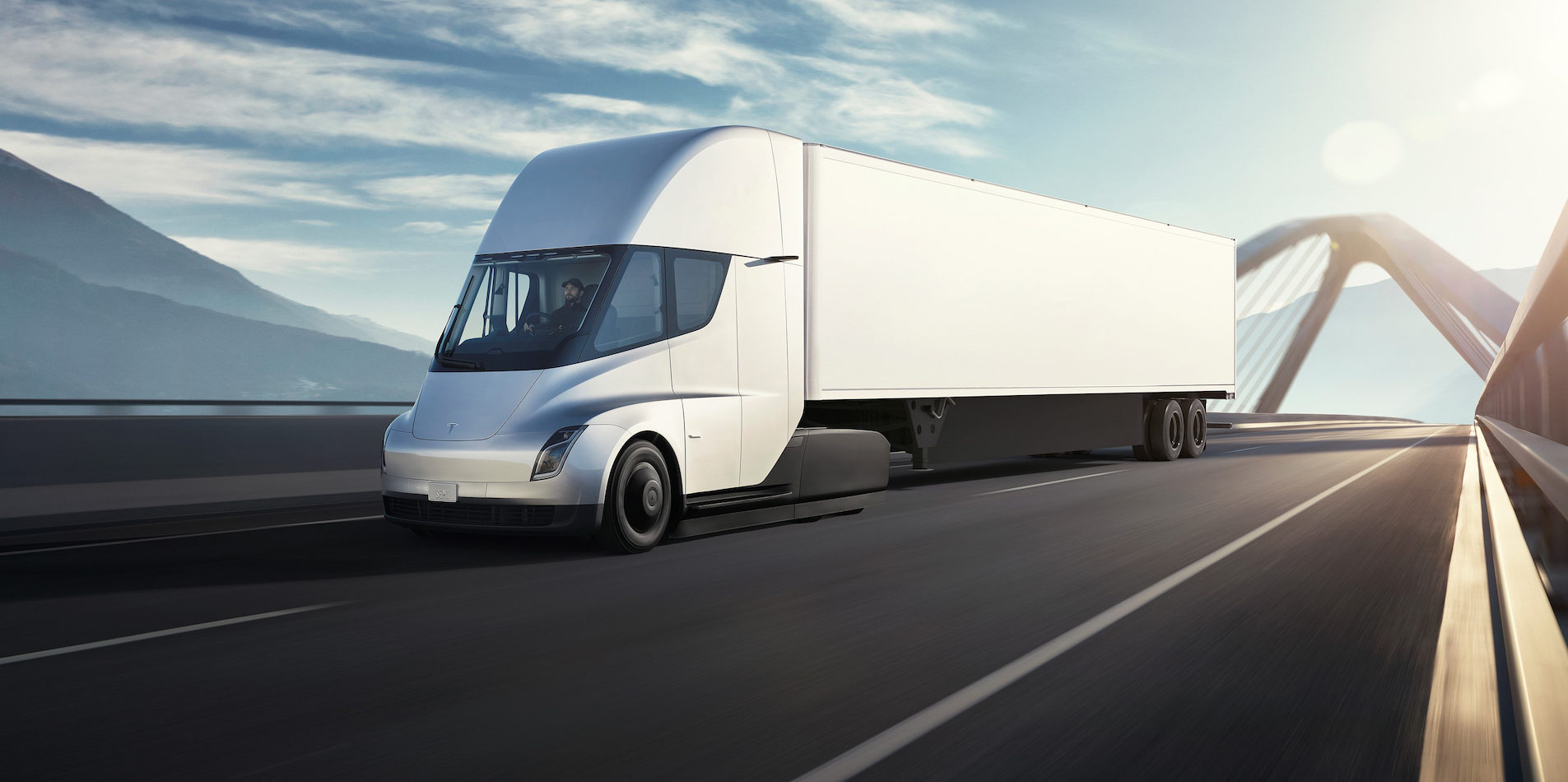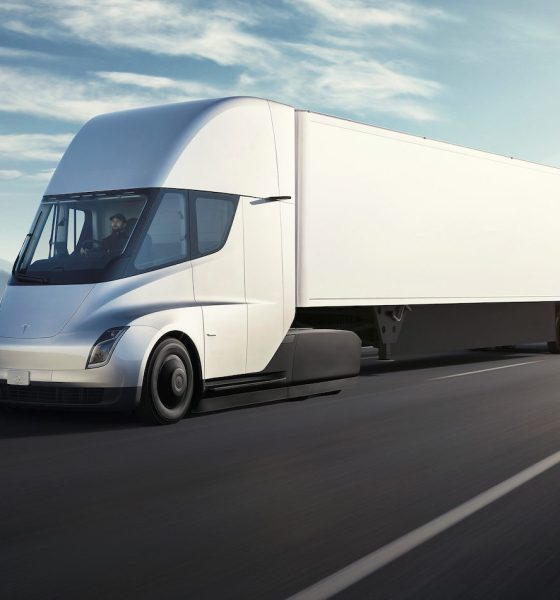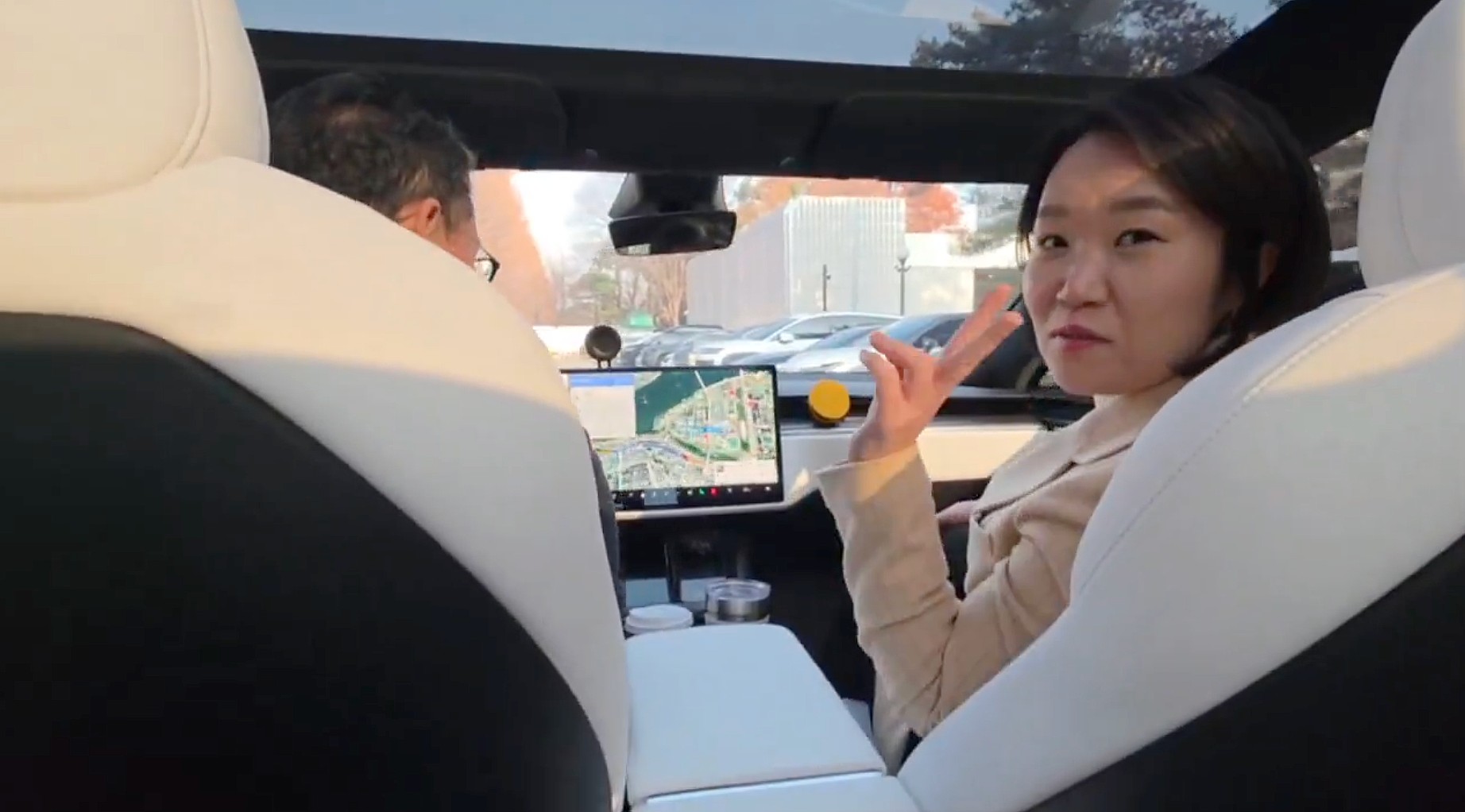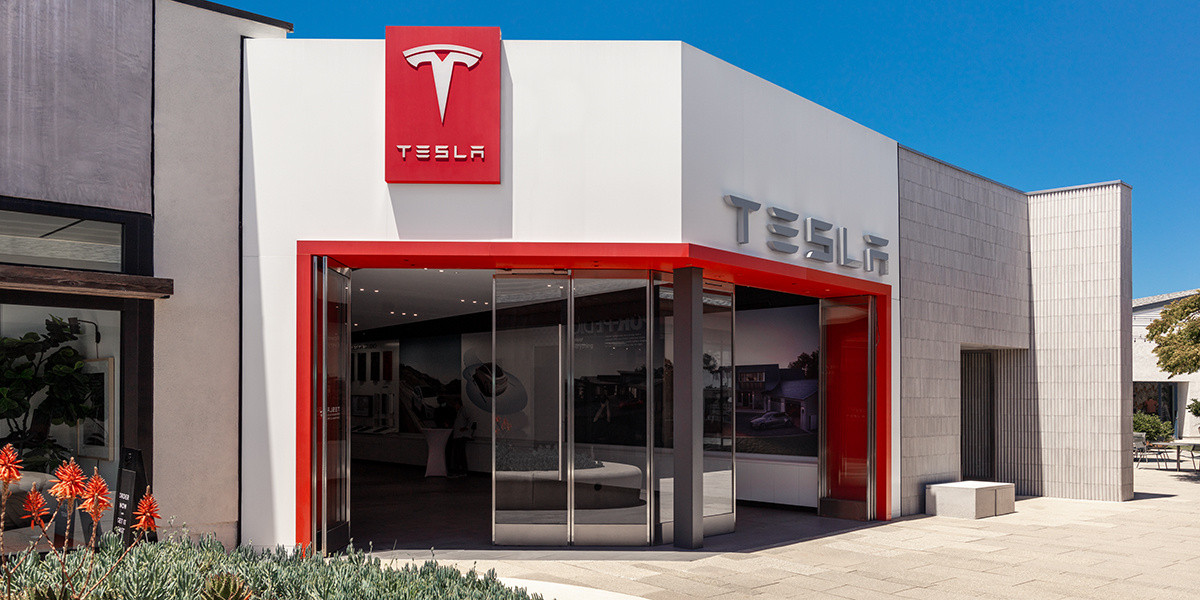

News
Tesla and rival Nikola listed among most innovative and disruptive companies in freight
This year, the FreightWaves Research Institute conducted a study aimed at determining which companies are the most innovative and disruptive in the freight and logistics industry. From 500 companies, a panel of experts selected by the institute narrowed down the list to 25. These 25 companies represented the best that the freight and logistics industry has to offer, in terms of innovation, tech, and potential disruption.
Dubbed as the Freight.Tech25, the institute’s list of top companies included freight logistics heavyweights such as Amazon and J.B. Hunt. Standing near the top of the Top 25 list was Tesla, which placed third overall. Tesla was among the few automakers that made it to the Freight.Tech25, beating out Daimler, which placed 11th in the study’s rankings. Trucking startup Nikola Motor Company, which makes hydrogen-electric trucks, placed 24th in the Top 25 list.
FreightWaves (a publication behind the institute that conducted the study) has traditionally been quite bearish on Tesla, and in particular, Elon Musk. That said, the publication notes that behind all the drama and controversy surrounding its CEO, it is undeniable that Tesla has “set much of the conversation around autonomous (technologies) and electrification, and incumbents and OEMs across the globe are chasing them.” Led by the Tesla Semi and vehicles like the Model 3, the electric car maker seems poised to be a true disruptor in the transportation and logistics field.
Speaking in a symposium, James O’Leary, VP of NFI Industries fleet services noted that the long-haul industry today is becoming very particular about electrification. The NFI Industries executive had a name for the trend — the “Tesla Effect.”
“Nobody in North America was talking about electric vehicles until your local news outlets picked up the rollout of the Tesla Semi. That led basically to what we call the Tesla effect. Now shippers are asking their carriers where you are with electric vehicles,” he said.
Another surprising automaker that made it to the Freight.Tech25 is Tesla rival Nikola Motor, a company that creates hydrogen-electric long-haulers. Considering that the startup is yet to start the production of any of its vehicles, the company’s place in the FreightWaves Research Institute’s list is commendable. The institute has noted, though, that Nikola’s tech has received rave reviews in terms of fleet pre-orders. Thanks in part to the company’s practice of accepting orders without a reservation fee, Nikola has also reportedly received over $8 billion in pre-orders for its lineup of hydrogen-electric trucks — the Nikola One sleeper, the Nikola Two daycab, and the Nikola Tre, which is designed for the European and Australian market.
In true Nikola fashion, the trucking startup has issued a bold, optimistic statement on its official Twitter page, stating that while it was great to have made it into the Freight.Tech25, the company believes in the notion that “If you ain’t first, you’re last.” As such, Nikola declared that it “will never be okay with 24th place.”
While it is nice getting in top 25, our company belief is that "If you ain't first you're last". Thank you Ricky Bobby, we agree. Nikola will never be ok with 24th place. Our only goal is #emissionsgameover https://t.co/x9Mwz6Nvvy
— Nikola Corporation (@nikolamotor) December 17, 2018
For now, Tesla continues to test the Semi on US roads, with the company’s prototypes being sighted across several states. Just recently, even the matte black Tesla Semi prototype, which has remained unseen for months, was sighted charging in the Kettleman City Supercharger. Nikola, for its part, is preparing to hold its most ambitious event this coming April, where it is set to unveil its new hydrogen-electric trucks.

News
Tesla Full Self-Driving gets sparkling review from South Korean politician
“Having already ridden in an unmanned robotaxi, the novelty wasn’t as strong for me, but it drives just as well as most people do. It already feels like a completed technology, which gives me a lot to think about.”

Tesla Full Self-Driving got its first sparkling review from South Korean politician Lee So-young, a member of the country’s National Assembly, earlier this week.
Lee is a member of the Strategy and Finance Committee in South Korea and is a proponent of sustainable technologies and their applications in both residential and commercial settings. For the first time, Lee was able to utilize Tesla’s Full Self-Driving technology as it launched in the country in late November.
Her thoughts on the suite were complimentary to the suite, stating that “it drives just as well as most people do,” and that “it already feels like a completed technology.”
드디어 오늘, 서울에서 테슬라 FSD 체험 했습니다.
JiDal Papa님의 모델S 협찬에 힘입어^^ 파파님 정말 감사합니다.
국회 -> 망원시장 -> 홍익대 -> 국회 복귀 코스였고요.
이미 무인 로보택시를 타봐서 그런지 신기함은
덜했지만, 웬만한 사람만큼 운전을 잘하네요.이미 완성된 기술이라고… pic.twitter.com/8pAidHBpRG
— 이소영 국회의원 (Soyoung Lee) (@im_soyounglee) December 17, 2025
Her translated post says:
“Finally, today I got to experience Tesla FSD in Seoul. Thanks to the Model S sponsored by JiDal Papa^^, I’m truly grateful to Papa. The route was from the National Assembly -> Mangwon Market -> Hongik University -> back to the National Assembly. Having already ridden in an unmanned robotaxi, the novelty wasn’t as strong for me, but it drives just as well as most people do. It already feels like a completed technology, which gives me a lot to think about. Once it actually spreads into widespread use, I feel like our daily lives are going to change a lot. Even I, with my license gathering dust in a drawer, don’t see much reason to learn to drive a manual anymore.”
Tesla Full Self-Driving officially landed in South Korea in late November, with the initial launch being one of Tesla’s most recent, v14.1.4.
It marked the seventh country in which Tesla was able to enable the driver assistance suite, following the United States, Puerto Rico, Canada, China, Mexico, Australia, and New Zealand.
It is important to see politicians and figures in power try new technologies, especially ones that are widely popular in other regions of the world and could potentially revolutionize how people travel globally.
News
Tesla dispels reports of ‘sales suspension’ in California
“This was a “consumer protection” order about the use of the term “Autopilot” in a case where not one single customer came forward to say there’s a problem.
Sales in California will continue uninterrupted.”

Tesla has dispelled reports that it is facing a thirty-day sales suspension in California after the state’s Department of Motor Vehicles (DMV) issued a penalty to the company after a judge ruled it “misled consumers about its driver-assistance technology.”
On Tuesday, Bloomberg reported that the California DMV was planning to adopt the penalty but decided to put it on ice for ninety days, giving Tesla an opportunity to “come into compliance.”
Tesla enters interesting situation with Full Self-Driving in California
Tesla responded to the report on Tuesday evening, after it came out, stating that this was a “consumer protection” order that was brought up over its use of the term “Autopilot.”
The company said “not one single customer came forward to say there’s a problem,” yet a judge and the DMV determined it was, so they want to apply the penalty if Tesla doesn’t oblige.
However, Tesla said that its sales operations in California “will continue uninterrupted.”
It confirmed this in an X post on Tuesday night:
This was a “consumer protection” order about the use of the term “Autopilot” in a case where not one single customer came forward to say there’s a problem.
Sales in California will continue uninterrupted.
— Tesla North America (@tesla_na) December 17, 2025
The report and the decision by the DMV and Judge involved sparked outrage from the Tesla community, who stated that it should do its best to get out of California.
One X post said California “didn’t deserve” what Tesla had done for it in terms of employment, engineering, and innovation.
Tesla has used Autopilot and Full Self-Driving for years, but it did add the term “(Supervised)” to the end of the FSD suite earlier this year, potentially aiming to protect itself from instances like this one.
This is the first primary dispute over the terminology of Full Self-Driving, but it has undergone some scrutiny at the federal level, as some government officials have claimed the suite has “deceptive” naming. Previous Transportation Secretary Pete Buttigieg was vocally critical of the use of the name “Full Self-Driving,” as well as “Autopilot.”
News
New EV tax credit rule could impact many EV buyers
We confirmed with a Tesla Sales Advisor that any current orders that have the $7,500 tax credit applied to them must be completed by December 31, meaning delivery must take place by that date. However, it is unclear at this point whether someone could still claim the credit when filing their tax returns for 2025 as long as the order reflects an order date before September 30.

Tesla owners could be impacted by a new EV tax credit rule, which seems to be a new hoop to jump through for those who benefited from the “extension,” which allowed orderers to take delivery after the loss of the $7,500 discount.
After the Trump Administration initiated the phase-out of the $7,500 EV tax credit, many were happy to see the rules had been changed slightly, as deliveries could occur after the September 30 cutoff as long as orders were placed before the end of that month.
However, there appears to be a new threshold that EV buyers will have to go through, and it will impact their ability to get the credit, at least at the Point of Sale, for now.
Delivery must be completed by the end of the year, and buyers must take possession of the car by December 31, 2025, or they will lose the tax credit. The U.S. government will be closing the tax credit portal, which allows people to claim the credit at the Point of Sale.
🚨UPDATE: $7,500 Tax Credit Portal “Closes By End of Year”.
This is bad news for pending Tesla buyers (MYP) looking to lock in the $7,500 Tax Credit.
“it looks like the portal closes by end of the year so there be no way for us to guarantee the funds however, we will try our… pic.twitter.com/LnWiaXL30k
— DennisCW | wen my L (@DennisCW_) December 15, 2025
We confirmed with a Tesla Sales Advisor that any current orders that have the $7,500 tax credit applied to them must be completed by December 31, meaning delivery must take place by that date.
However, it is unclear at this point whether someone could still claim the credit when filing their tax returns for 2025 as long as the order reflects an order date before September 30.
If not, the order can still go through, but the buyer will not be able to claim the tax credit, meaning they will pay full price for the vehicle.
This puts some buyers in a strange limbo, especially if they placed an order for the Model Y Performance. Some deliveries have already taken place, and some are scheduled before the end of the month, but many others are not expecting deliveries until January.








